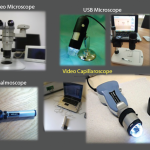“These categories help us stratify and communicate in clinical practice,” said Dr. Distler. Moreover, he pointed out that classification systems are ultimately developed to help develop better clinical trials. He argued that the debate itself has led to an unfortunate dearth of research on MCTD, and Dr. Christopher-Stine added that this has impaired the development of targeted treatment strategies.
Dr. James noted that because the U.S. Food and Drug Administration has not specifically approved any therapies for MCTD, patients sometimes can’t get approved for specific medications if they have the diagnosis on record. Moreover, they often can’t qualify for participation in clinical trials, even if they also meet criteria for a diagnosis, such as SLE or systemic sclerosis, because they have a concurrent autoimmune disease. “We’re doing our patients a disservice by giving them another diagnosis that keeps them from actively participating in studies and potentially getting new therapies,” she noted.
Dr. James shared some key learning points that have broader implications, irrespective of whether one finds the pro or con arguments more convincing. She remarked that patients positive for U1-RNP antibodies may need additional screening, such as echocardiograms, pulmonary function tests and chest X-ray or computed tomography scan, regardless of whether they have a diagnosis of MCTD or another connective tissue disease.
Dr. James also added that it’s very common for patients to present with symptoms of multiple autoimmune diseases, although usually practitioners focus on just one. “Sometimes that helps our patients, but other times not so much,” she said. “We need paths to trials and insurance coverage for medications for patients who don’t clearly follow just one set of classification criteria.”
 Ruth Jessen Hickman, MD, a graduate of the Indiana University School of Medicine, is a medical and science writer in Bloomington, Ind.
Ruth Jessen Hickman, MD, a graduate of the Indiana University School of Medicine, is a medical and science writer in Bloomington, Ind.
References
- Sharp GC, Irvin WS, Tan EM, et al. Mixed connective tissue disease—An apparently distinct rheumatic disease syndrome associated with a specific antibody to an extractable nuclear antigen (ENA). Am J Med. 1972 Feb;52(2):148–159.
- Chevalier K, Chassagnon G, Leonard-Louis S, et al. Anti-U1RNP antibodies are associated with a distinct clinical phenotype and a worse survival in patients with systemic sclerosis. J Autoimmun. 2024 Jun;146:103220.
- Xiang W, Dong R, Li M, et al. The role of anti-U1 RNP antibody in connective tissue disease-associated pulmonary arterial hypertension: A systematic review and meta-analysis. J Clin Med. 2022 Dec;12(1):13.
- Tanaka Y, Kuwana M, Fujii T, et al. 2019 Diagnostic criteria for mixed connective tissue disease (MCTD): From the Japan research committee of the ministry of health, labor, and welfare for systemic autoimmune diseases. Mod Rheumatol. 2021 Jan;31(1):29–33.
- Kasukawa R. Mixed connective tissue disease. Intern Med. 1999 May;38(5):386–393.
- Alarcón-Segovia D, Villarreal M. Classification and diagnostic criteria for mixed connective tissue disease. In: Kasukawa R, Sharp GC, et al., Eds. Mixed Connective Tissue Disease and Antinuclear Antibodies. Elsevier Science, Amsterdam. 1987:33–40.
- Sharp GC. Diagnostic criteria for classification of MCTD. In: Kasukawa R, Sharp GC, et al., Eds. Mixed Connective Tissue Disease and Antinuclear Antibodies. Elsevier Science, Amsterdam. 1987:23–32.
- Cappelli S, Bellando Randone S, Martinović D, et al. ‘To be or not to be,’ 10 years after: Evidence for mixed connective tissue disease as a distinct entity. Semin Arthritis Rheum. 2012 Feb;41(4):589–598.
- Fairley JL, Hansen D, Proudman S, et al. Clinical features of systemic sclerosis-mixed connective tissue disease and systemic sclerosis overlap syndromes. Arthritis Care Res (Hoboken). 2021 May;73(5):732–741.
- Carpintero MF, Martinez L, Fernandez I, et al. Diagnosis and risk stratification in patients with anti-RNP autoimmunity. Lupus. 2015 Sep;24(10):1057–1066.
- Wanzenried A, Garaiman A, Jordan S, et al. The enigma of mixed connective tissue disease-challenges in routine care. Clin Rheumatol. 2022 Nov;41(11):3503–3511.
- Elhai M, Sritharan N, Boubaya M, et al. Stratification in systemic sclerosis according to autoantibody status versus skin involvement: A study of the prospective EUSTAR cohort. Lancet Rheumatol. 2022 Nov;4(11):e785–e794.
- Nordberg LB, Lillegraven S, Aga AB, et al. Comparing the disease course of patients with seronegative and seropositive rheumatoid arthritis fulfilling the 2010 ACR/EULAR classification criteria in a treat-to-target setting: 2-year data from the ARCTIC trial. RMD Open. 2018 Nov 16;4(2):e000752.
- Sinicato NA, Postal M, Appenzeller S, et al. Defining biological subsets in systemic lupus erythematosus: Progress toward personalized therapy. Pharmaceut Med. 2017 Apr;31(2):81–88.
- Barturen G, Babaei S, Català-Moll F, et al. Integrative analysis reveals a molecular stratification of systemic autoimmune diseases. Arthritis Rheumatol. 2021 Jun;73(6):1073–1085.
